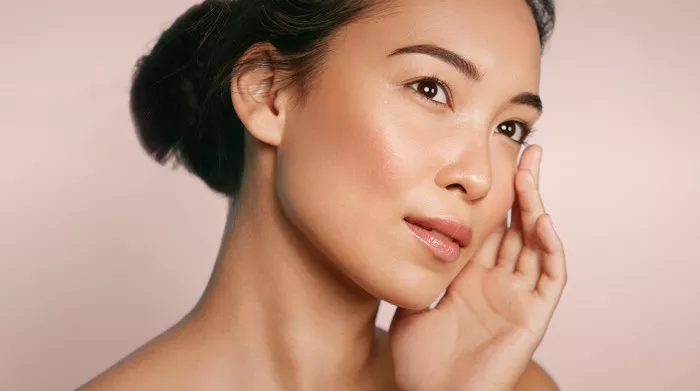As we age, wrinkles become a common concern for many individuals. The quest for smoother, more youthful-looking skin leads us to explore various treatment options. In this article, we will delve into the world of wrinkle treatments, discussing different approaches and helping you determine the best options for tackling wrinkles effectively.
Understanding Wrinkles
Before delving into treatments, it’s important to understand what wrinkles are and how they form. Wrinkles are creases or folds that develop in the skin over time, primarily as a result of aging. They can be categorized into two types: dynamic wrinkles and static wrinkles.
Dynamic Wrinkles: Dynamic wrinkles are formed as a result of repetitive facial muscle movements, such as smiling, frowning, or squinting. These wrinkles are most noticeable when the muscles are engaged and typically disappear when the muscles are at rest.
Static Wrinkles: Static wrinkles, on the other hand, are visible even when the facial muscles are at rest. They are caused by a combination of factors, including collagen and elastin breakdown, loss of skin elasticity, and environmental factors like sun exposure and smoking.
Available Treatments for Wrinkles
Topical Creams and Serums
Over-the-counter and prescription topical products can help reduce the appearance of fine lines and wrinkles. Ingredients like retinol, hyaluronic acid, peptides, and antioxidants are commonly found in these products. They work by hydrating the skin, stimulating collagen production, and promoting cell turnover. Topical treatments are best suited for mild to moderate wrinkles.
Injectable Treatments
Injectable treatments, such as botulinum toxin (Botox) and dermal fillers, are popular options for reducing the appearance of wrinkles. Botox works by temporarily relaxing the muscles that cause dynamic wrinkles, effectively smoothing out the skin. Dermal fillers, on the other hand, add volume to areas affected by static wrinkles, plumping up the skin and reducing their appearance. These treatments are suitable for both dynamic and static wrinkles.
Chemical Peels
Chemical peels involve applying a solution to the skin, which causes exfoliation and the removal of the outermost layer. This stimulates cell regeneration and collagen production, resulting in smoother skin and reduced wrinkles. Chemical peels come in different strengths, ranging from superficial to deep peels, and can address various levels of wrinkles.
Laser and Light Therapies
Laser resurfacing and light therapies use energy-based devices to target wrinkles and promote collagen production. Fractional laser treatments create microscopic injuries in the skin, triggering the body’s natural healing response and stimulating collagen remodeling. Intense Pulsed Light (IPL) and non-ablative lasers are also used to target specific pigmentation concerns and stimulate collagen production, improving overall skin texture and reducing the appearance of wrinkles.
Microdermabrasion
Microdermabrasion is a non-invasive procedure that exfoliates the outermost layer of the skin using a handheld device. This helps improve skin texture, stimulate collagen production, and reduce the appearance of fine lines and wrinkles. Microdermabrasion is best suited for mild wrinkles and is often performed in a series of sessions for optimal results.
Radiofrequency Treatments
Radiofrequency (RF) treatments use controlled energy to heat the deep layers of the skin, stimulating collagen production and tightening the skin. These treatments can help improve the appearance of wrinkles and promote skin rejuvenation. RF treatments can be performed using devices like radiofrequency microneedling or RF energy delivered through a handheld device.
Surgical Procedures
For more severe wrinkles and sagging skin, surgical procedures such as facelifts or brow lifts may be considered. These procedures involve removing excess skin and tightening the underlying tissues to achieve a smoother, more youthful appearance. Surgical options are typically reserved for individuals with significant signs of aging.
Determining the Best Treatment for You
The best treatment for wrinkles varies depending on several factors, including the severity of the wrinkles, your skin type, budget, and personal preferences. Here are some considerations to keep in mind when choosing a treatment:
Consultation with a Professional: It’s crucial to consult with a qualified aesthetician, dermatologist, or plastic surgeon to assess your skin and discuss your concerns. They can provide expert guidance on the most suitable treatment options based on your specific needs.
Severity of Wrinkles: Different treatments are more effective for specific types and levels of wrinkles. Mild wrinkles may respond well to topical creams or microdermabrasion, while deep wrinkles may require injectables or surgical interventions.
Downtime and Recovery: Consider the downtime and recovery associated with each treatment. Some treatments may require minimal downtime, while others may have longer recovery periods. Take into account your lifestyle and commitments when choosing a treatment option.
Budget: Treatment costs can vary significantly depending on the type of procedure and the number of sessions required. Consider your budget and determine the treatments that align with your financial capabilities.
Risk Tolerance: Every treatment carries a certain degree of risk. Discuss potential side effects, risks, and complications with your healthcare provider to determine which options align with your risk tolerance.
Combination Approaches: In some cases, combining different treatments may yield the best results. Your healthcare provider can recommend a combination approach that addresses multiple concerns and optimizes the outcome.
Conclusion
The best treatment for wrinkles depends on various factors, including the type and severity of wrinkles, your skin type, budget, and personal preferences. From topical creams and injectables to laser treatments and surgical procedures, a wide range of options is available. Consulting with a qualified professional is key to determining the most suitable treatment for your specific needs. Remember to consider factors such as downtime, budget, and risk tolerance when making your decision. With the right treatment approach, you can effectively reduce the appearance of wrinkles and achieve smoother, more youthful-looking skin.


